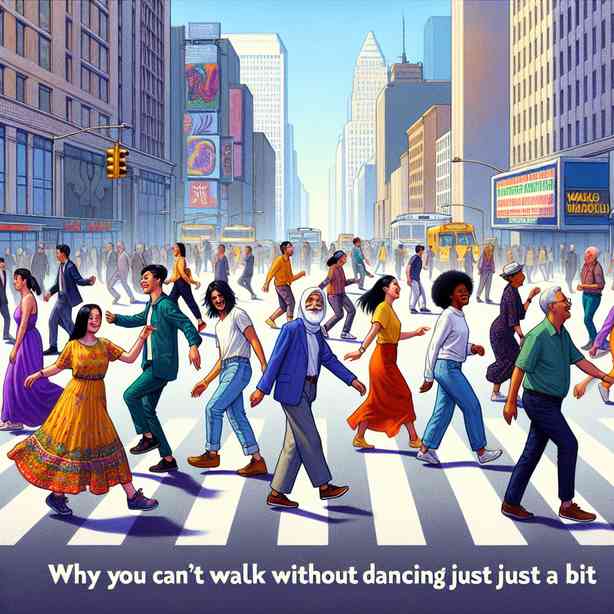
Dancing is often seen as an art form, but can you imagine a world where walking and dancing don’t intersect? This topic invites us to deeply explore the intrinsic connection between the two. The simple act of walking, something so mundane and essential to our daily lives, often carries an inherent rhythm and connection to music and movement. Let’s delve into why you can’t walk without dancing just a bit, uncovering the science, culture, and psychology behind this phenomenon.
From ancient civilizations to modern societies, movement has always played a vital role in human expression. The rhythm of our walk can mirror the rhythm of music, creating an engaging interplay between the two. When we walk, our bodies naturally adopt a certain cadence, akin to the beats we hear in our favorite songs. This connection is not coincidental; it’s an evolutionary trait embedded in our psyche. Our ancestors relied on rhythm for survival – whether it was coordinating group movements during hunting or communicating through rhythmic patterns. Therefore, every time you take a step, you are tapping into an instinctual rhythm that has been part of human existence for millennia.
Research in kinesiology suggests that our gait is influenced by our emotional state, which is closely linked to our ability to express ourselves through dance. When we walk with a spring in our step, it is often a reflection of our mood, while a slower, heavier gait may indicate sadness or fatigue. This emotional connection between our walk and ability to “dance” illuminates how intertwined these two actions truly are. Movement is not only a means of transportation; it is a form of expression that can reflect our inner feelings.
Moreover, the idea of ‘walking without dancing’ challenges our understanding of how we relate to music in our daily lives. Music can evoke physical responses innate to our bodies, often manifesting in spontaneous movement or dance. Studies have shown that certain rhythms can stimulate the brain, triggering impulses to move. The neurological pathways that govern our auditory and motor functions are closely linked, meaning that engaging with music often leads to an urge to dance, even if it is just in the subtleties of how we walk.
Culturally, dance has always been a form of connection and community. Different cultures embody unique styles of walking that often reflect their dance traditions. For instance, in some cultures, music and dance are so deeply interwoven with daily life that every step taken is almost a dance step itself. The rich cultural heritage surrounding dance and movement celebrates the idea that life is rhythm. Traditional folk dances often incorporate walks that are rhythmic and expressive, showcasing the community’s identity while simultaneously allowing individuals to express their distinct characteristics.
Furthermore, consider how dancing influences our physical health. Engaging in dance-like movements while walking can enhance cardiovascular fitness, improve balance, and foster coordination. It encourages our bodies to move in diverse ways, promoting flexibility and strength. The act of dancing, even if just a little, while walking might inspire a more active lifestyle, enhancing both our physical and mental well-being in the process.
Dance is also a tool for social interaction. Grooving along to music while walking can connect us with our surroundings, opening doors to social opportunities. Whether it’s a nod to a stranger passing by or a spontaneous dance moment with a friend, these interactions add layers of meaning to our daily experiences. In urban settings, street performers blend dance and walking, attracting crowds and creating moments of joy. Such experiences remind us that movement is not just about the destination but the connections and joy found along the way.
In a philosophical sense, thinking about walking as a dance invites us to reflect on the rhythm of our lives. Are we moving through life with unacknowledged joy? Are we taking the time to appreciate the beauty of movement? When we choose to walk with a dance-like grace, we set a tone for our day, fostering positivity and an appreciation for life’s little moments. This mindful approach to walking can transform an ordinary act into a celebration, reminding us of our capability to find joy even in the most routine parts of our existence.
In conclusion, the beautiful interplay of walking and dancing is evident in countless aspects of our lives. They are not mutually exclusive but rather two elements of the same intricate dance of life. The rhythm of our steps can echo the melody of music, prompting us to move in ways that reflect our emotions and cultural identities. By embracing this connection, we can lead fuller, more joyful lives, discovering the music in our steps. So, the next time you find yourself walking, remember that each step can transform into a dance, enriching your journey through life with rhythm, joy, and community.


